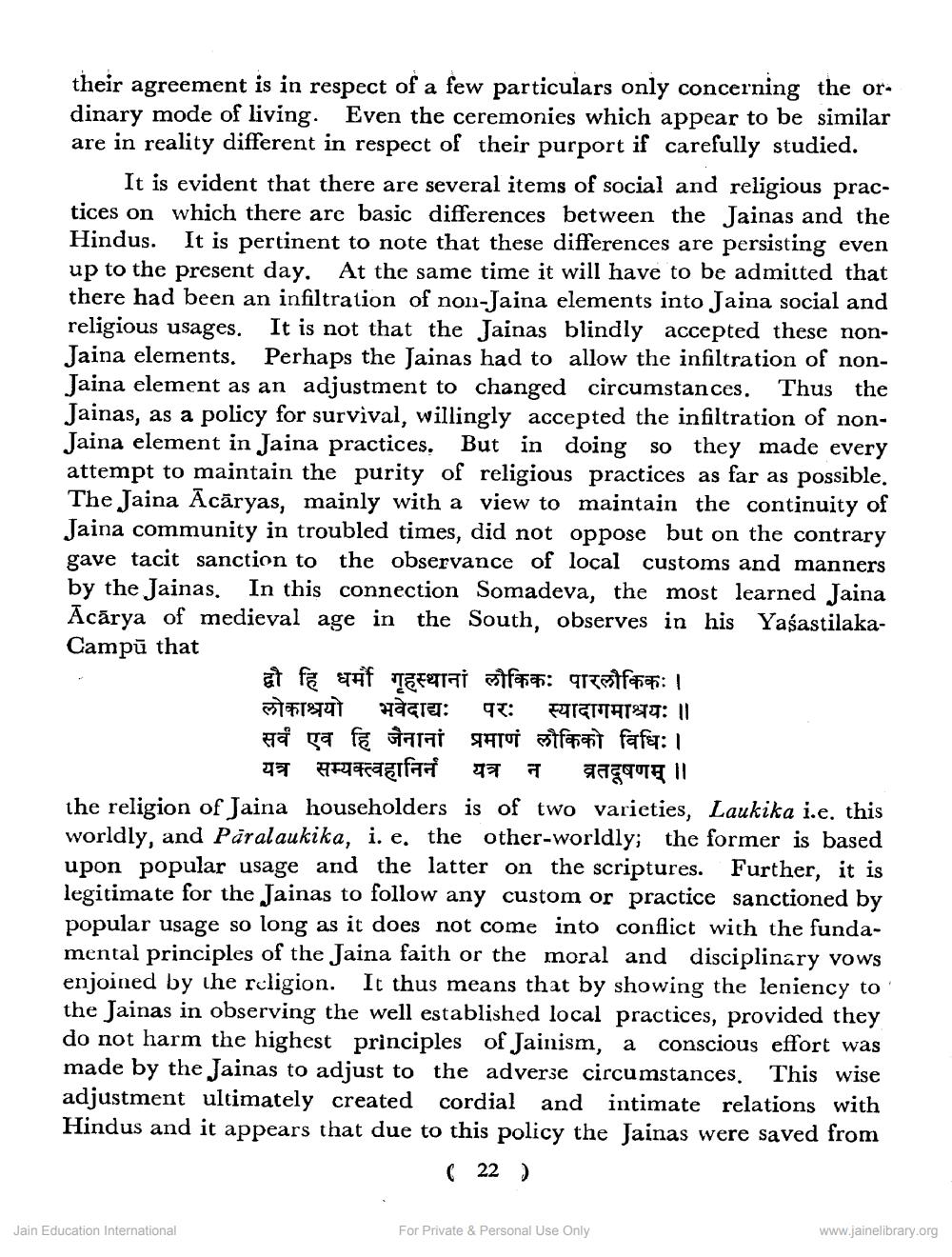________________
their agreement is in respect of a few particulars only concerning the ordinary mode of living. Even the ceremonies which appear to be similar are in reality different in respect of their purport if carefully studied.
It is evident that there are several items of social and religious practices on which there are basic differences between the Jainas and the Hindus. It is pertinent to note that these differences are persisting even up to the present day. At the same time it will have to be admitted that there had been an infiltration of non-Jaina elements into Jaina social and religious usages. It is not that the Jainas blindly accepted these nonJaina elements. Perhaps the Jainas had to allow the infiltration of nonJaina element as an adjustment to changed circumstances. Jainas, as a policy for survival, willingly accepted the infiltration of nonJaina element in Jaina practices. But in doing so they made every attempt to maintain the purity of religious practices as far as possible. The Jaina Ācāryas, mainly with a view to maintain the continuity of Jaina community in troubled times, did not oppose but on the contrary gave tacit sanction to the observance of local customs and manners by the Jainas. In this connection Somadeva, the most learned Jaina Ācārya of medieval age in the South, observes in his YaśastilakaCampū that
द्वौ हि धर्मी गृहस्थानां लौकिकः पारलौकिकः । लोकाश्रयो भवेदाद्यः परः स्यादागमाश्रयः ॥ सर्व एव हि जैनानां प्रमाणं लौकिको विधिः ।
यत्र सम्यक्त्वहानिर्न यत्र न व्रतदूषणम् ॥ the religion of Jaina householders is of two varieties, Laukika i.e. this worldly, and Paralaukika, i. e. the other-worldly; the former is based upon popular usage and the latter on the scriptures. Further, it is legitimate for the Jainas to follow any custom or practice sanctioned by popular usage so long as it does not come into conflict with the fundamental principles of the Jaina faith or the moral and disciplinary vows enjoined by the religion. It thus means that by showing the leniency to the Jainas in observing the well established local practices, provided they do not harm the highest principles of Jainism. a conscious e made by the Jainas to adjust to the adverse circumstances. This wise adjustment ultimately created cordial and intimate relations with Hindus and it appears that due to this policy the Jainas were saved from
(22)
Jain Education International
For Private & Personal Use Only
www.jainelibrary.org




